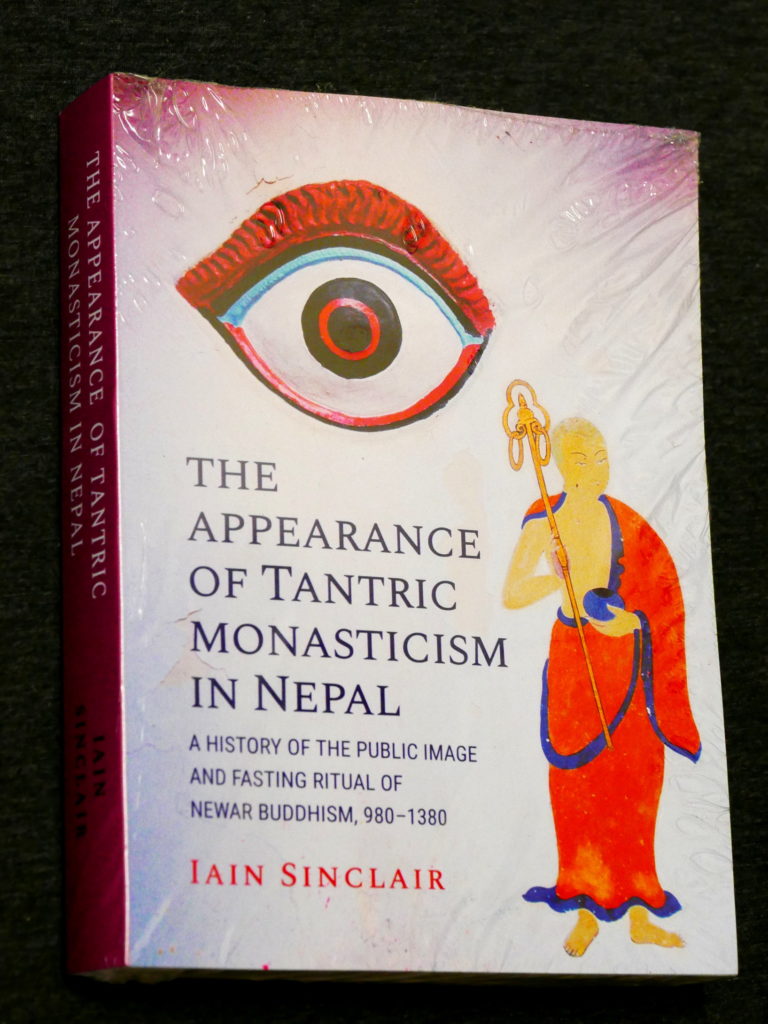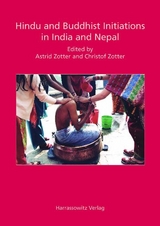Emmanuel Francis. 2018. ‘Indian Copper-Plate Grants: Inscriptions or Documents?’ In Alessandro Bausi, Christian Brockmann, Michael Friedrich, Sabine Kienitz (eds.) Manuscripts and Archives: Comparative Views on Record-Keeping. Studies in Manuscript Cultures 11. Berlin/Boston: De Gruyter, 387–417. ISBN: 9783110541397. DOI: 10.1515/9783110541397-014 [chapter]. [PDF 
Cubelic et al (2018), Historical Documents from Nepal and India
 Simon Cubelic, Axel Michaels, Astrid Zotter (eds). 2018. Studies in Historical Documents from Nepal and India. Documenta Nepalica – Book Series 1. Heidelberg: Heidelberg University Publishing. ISBN 978-3-946054-70-2 (PDF), 978-3-946054-71-9. 535 pp. (Hardcover) DOI:10.17885/heiup.331.454 [PDF
Simon Cubelic, Axel Michaels, Astrid Zotter (eds). 2018. Studies in Historical Documents from Nepal and India. Documenta Nepalica – Book Series 1. Heidelberg: Heidelberg University Publishing. ISBN 978-3-946054-70-2 (PDF), 978-3-946054-71-9. 535 pp. (Hardcover) DOI:10.17885/heiup.331.454 [PDF 
Continue reading “Cubelic et al (2018), Historical Documents from Nepal and India”
Davidson (2017), Magicians, Sorcerers and Witches
Ronald M. Davidson. 2017. ‘Magicians, Sorcerers and Witches: Considering Pretantric, Non-sectarian Sources of Tantric Practices’. Religions (Special issue: Society for Tantric Studies 2016 Proceedings, eds. Glen A. Hayes & Sthaneshwar Timalsina), 8(9), 188 [33 pp.]. doi:10.3390/rel8090188 [PDF 
Sinclair (2016), The appearance of tantric monasticism in Nepal
 Iain Sinclair. 2016. ‘The appearance of tantric monasticism in Nepal: a history of the public image and fasting ritual of Newar Buddhism, 980-1380’. Monash University, Melbourne: PhD diss. 418 pp., 90 illustrations, 27 tables. DOI:10.4225/03/58ab8cadcf152
Iain Sinclair. 2016. ‘The appearance of tantric monasticism in Nepal: a history of the public image and fasting ritual of Newar Buddhism, 980-1380’. Monash University, Melbourne: PhD diss. 418 pp., 90 illustrations, 27 tables. DOI:10.4225/03/58ab8cadcf152
Contents
Continue reading “Sinclair (2016), The appearance of tantric monasticism in Nepal”
Book of the Year: ‘Hardships and Downfall of Buddhism’
Giovanni Verardi (appendices by Federica Barba). Hardships and Downfall of Buddhism in India. Nalanda-Sriwijaya Series 4. Delhi/Singapore: Manohar & Institute of Southeast Asian Studies, 2011. 523 pp.
Not a very catchy title, but I doubt that something more direct (say, The Hindu Extermination of Buddhism) would have been very appealing to Singapore’s Nalanda-Sriwijaya Centre, the book’s publisher.
This book is an extraordinary achievement, all the more so for it relying only indirectly, for the most part, on scriptural and epigraphic sources. Verardi’s contribution is based on something at least as useful: first-hand observation of the key sites and remains, clearly articulated in terms of long-term patterns. It is by far one of the most important contributions to the study of Buddhism in India published in a long time — though I don’t agree with everything in it, by any means. (Given the chance, I will expand on that later.) The omission of any discussion of the Theravādins’ catastrophic role, painstakingly explained in Peter Schalk’s 2002 Buddhism among Tamils volumes, has to be regarded as particularly puzzling — at least until one sees Peter Skilling’s name in the acknowledgements. But let me be clear: Verardi, who has pursued his line of inquiry for over three decades, has succeeded in making sense out of a slew of data in a way that is unlikely to be bettered for some time.
Zotter & Zotter, ‘Initiations in India & Nepal’ (2010)

The contributors to this volume are from different academic disciplines and treat examples of both kinds of rituals in various religious settings. Of special interest in this collection of essays are interrelationships among initiations and their relations to other kinds of rituals. The papers are devoted to the study of minute details and point to the dynamics of initiations. The transfer of ritual elements accompanied by readjustments to new contexts as the modification of procedures or the reassignment of meanings is one of the recurring traits. Other aspects addressed by the authors include the relation of script (ritual handbooks) to performance or various forces of change (e.g. the economics of ritual, gender-related variations, modernization and democratization). Continue reading “Zotter & Zotter, ‘Initiations in India & Nepal’ (2010)”
Vajracharya & Allen, ‘The Daśakarma Vidhi’ (2010)
Pandit Vaidya Asha Kaji (Ganesh Raj Vajracharya); Michael Allen, ed. The Daśakarma Vidhi: Fundamental Knowledge on Traditional Customs of Ten Rites of Passage Amongst the Buddhist Newars. Kathmandu: Mandala Book Point, 2010. 191 pp. ISBN: 9789994655144. [official site (ordering details)]
From the blurb:
The daśakarma begin with the birth ceremony (jaṭābhiṣeka) and end in the ceremonial initiation of the Supreme Seniormost or Head of the Community (cakreśvarābhiṣeka). The system of the daśakarma is so instilled in the life of every Buddhist Newar that the rites have become part and parcel of the life-cycle, thus presenting as inseparable traditional and cultural rites unique among human beings on earth. […]
Asha Kaji Vajracharya (1908–1992) was one of twentieth-century Nepal’s most respected Buddhist figures. Having cultivated the traditional learning of a pandit, he became renowned in his native Lalitpur as an Ayurvedic doctor, tantric practitioner and raconteur of Buddhist lore. He published over thirty books, many of which were translations or commentaries based on Sanskrit originals, and opened up his own manuscript collection to photography by the Nepal-German Manuscript Preservation Project. He advised and collaborated with a number of foreign scholars, and became the first Newar master to teach the Buddhist tradition of the Kathmandu Valley outside Asia, touring Japan at his students’ request, and bestowing initiation into the cycle of Cakrasamvara upon a non-Newar couple for the first time in the modern era. […]
Michael Allen was born in Dublin, Ireland, in 1928. He received his B.A. degree in Philosophy from Trinity College, Dublin in 1950 and his Ph.D. in Social Anthropology from the Australian National University in 1965. He was appointed to a lectureship in Anthropology at Sydney University in 1964 and retired as Professor in 1993. ln addition to his extensive fieldwork on Newar society and religion, conducted mainly between 1966 and 1978, Professor Allen has also carried out anthropological research in Vanuatu (1958–82) and in lreland (1988–96).
Benke, ‘The Śūdrācāraśiromaṇi of Kṛṣṇa Śeṣa’ (2010)
Theodore Benke. The Śūdrācāraśiromaṇi of Kṛṣṇa Śeṣa: A 16th Century Manual of Dharma for Śūdras. PhD diss., University of Pennsylvania, 2010. [abstract & official site / PDF]
From the abstract
“From the fourteenth to the seventeenth century C.E., a śāstra of a new type on the topic of Śūdras was composed and circulated among Dharmaśāstrins. […] Śūdradharma texts were one response of the Brahmin intellectual elite to the challenges to traditional dharma and dominance arising from the changing socio-economic conditions of Sultanate and Mughal India. They represent a shift in Dharmashastric discourse from the ritual exclusion of Śūdras as the sign of their social subjection to fuller integration into the Brahmanical fold. […] These śūdradharma texts were primarily concerned with the ritual life of Śūdras—the rites, sacraments, and forms of religious knowledge to which they were entitled in śruti and smṛti. But they also included expositions on the generation of Śūdra jātis according to the theory of varṇasaṅkara and descriptions of the ways of life and occupations of Śūdras. This is a study and translation of one of these texts, the Śūdrācāraśiromaṇi of Kṛṣṇa Śeṣa, among the most brilliant and eminent paṇḍits of late medieval Sanskrit, celebrated as both grammarian and poet.”

